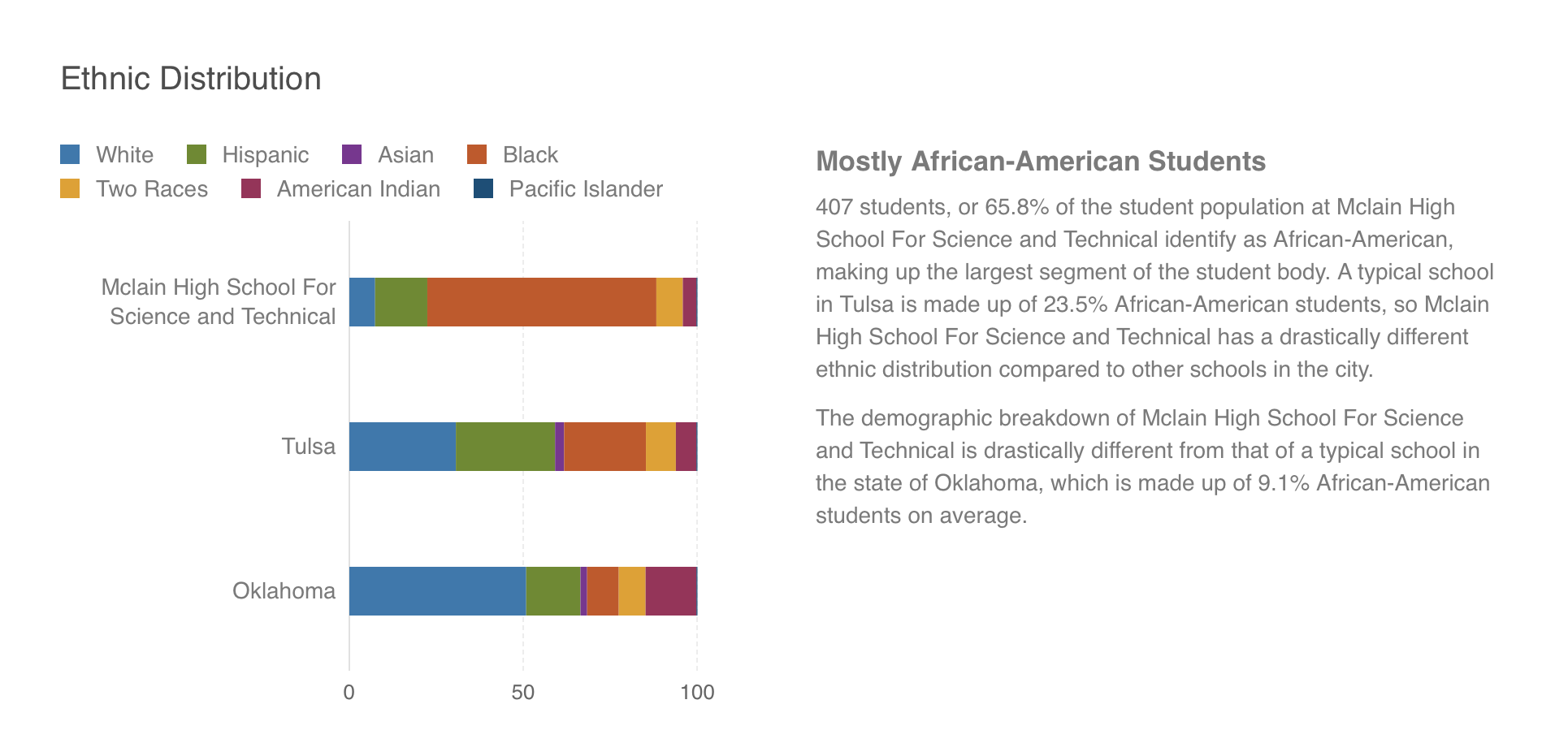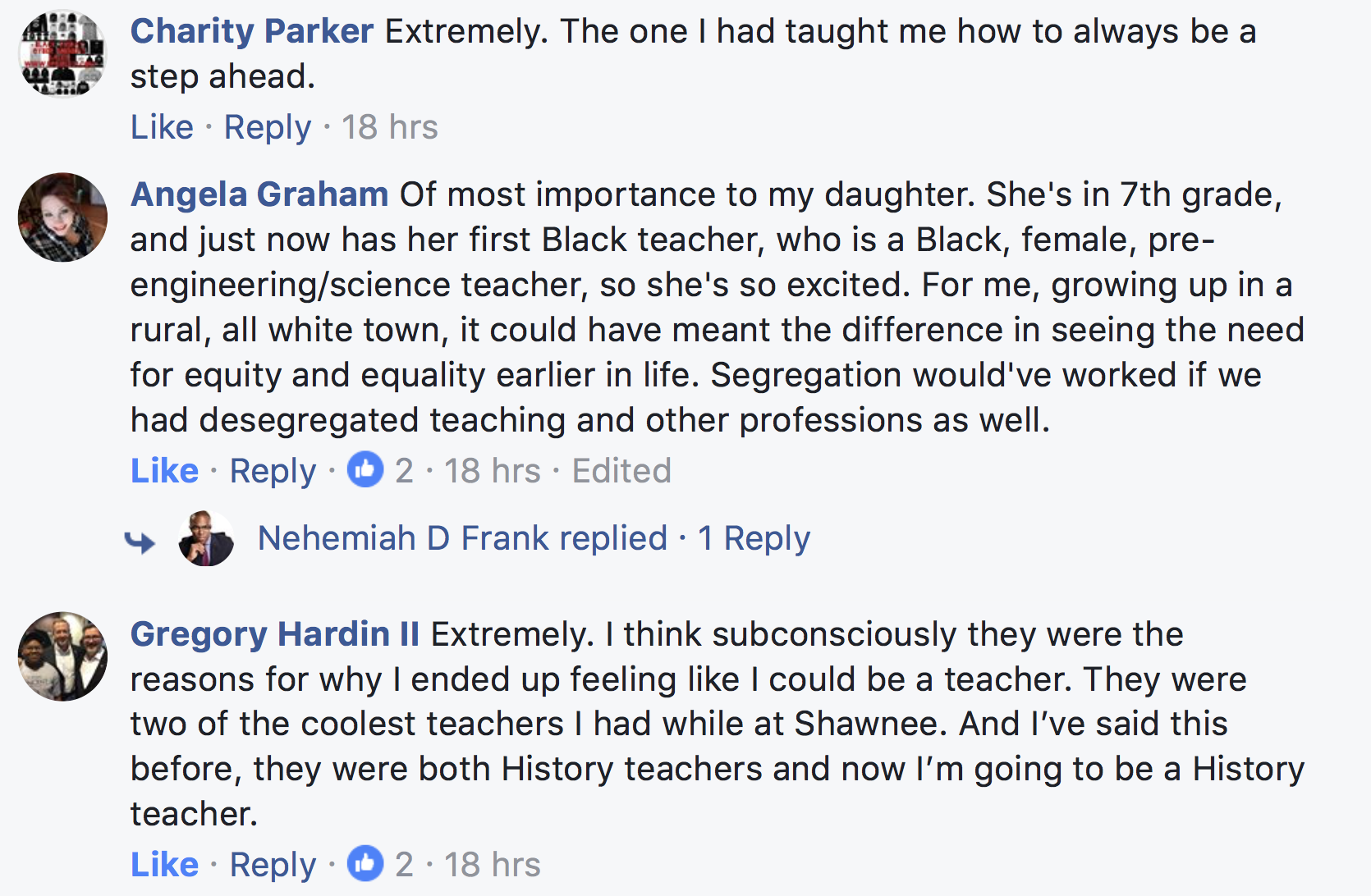Nehemiah D. Frank wrote a blog on his website, The Black Wall Street Times, that captured issues that resonates deeply with founders of The Fellowship: Black Male Educators for Social Justice. You can find the original piece here.
Tulsa, Okla. — The Founding Principal of Greenwood Leadership Academy, Kojo Asamoa-Caesar, declares love is the driving force that compels children to learn.
“Do you love me? Do you believe in me? Are you going to give me a chance?” are three virtuous questions Founding Principal Asamoa-Caesar believes are pondering in the minds of students across the country.
When reaching black youth, Principal Asamoa-Caesar is convinced cultural competency is vital to reaching black students.
His school, located in North Tulsa, Oklahoma, reside in a predominately African-American community; GLA boasts an all black staff, not only amid a state teacher shortage, but amid a nationwide black teacher shortage.
African-American teachers make up only 7-percent of America’s pedagogue population. The number is even smaller when it comes to African-American men. They make up less than 2-percent.

Children learning about the life cycle of a sunflower in Mrs. Princiz Jones Kindergarten Class
Where did all the black teachers go?
A Harvard Education Review study indicates that potential African-American teachers are less likely to be hired than their white counterparts.
The study looked at “hiring patterns of one large unidentified public school district.” The study found that “…black and white teachers who applied for jobs in the district were equally qualified. However, white teachers received a disproportional number of job offers,” a stark difference when comparing employment percentages from both cohorts.
Despite the fact that 13-percent of applicants, in the study, were black, only 6-percent of the black cohort received teaching positions. And of the 70 white applicants who applied, 77-percent of their group received teaching positions.
History on Black Teachers in Oklahoma



Hence, a homogenously African-American teaching and administrative staff, such as Greenwood Leadership Academy, was long overdue. GLA is essentially making history by having an all-black staff.
 Founding Principal Kojo explains “There is an added value for a majority African-American staff when our kids can see themselves in the leaders who are standing in front of them on a daily basis.” And “It’s not necessarily that the staff has to be black, because you can be black and not culturally competent, and you can be white and be culturally competent.”
Founding Principal Kojo explains “There is an added value for a majority African-American staff when our kids can see themselves in the leaders who are standing in front of them on a daily basis.” And “It’s not necessarily that the staff has to be black, because you can be black and not culturally competent, and you can be white and be culturally competent.”
Last year Heather Finch, a second-grade teacher at St. John’s Elementary school in Memphis, Tenn. switched the words to “Juju on That Beat” to connect with her students. Ms. Finch’s remixed version of the famous rapper’s song won big with her classroom and yielded her a national spotlight.
Some may view Ms. Finch’s remix as cultural appropriation; however, it’s about connecting to the kids, and Ms. Finch has certainly found her niche.
On the Importance of Black Teachers
A John Hopkins University study found that “having a black teacher in elementary school significantly increases the likelihood that a black student will graduate.” Moreover, “The impact is particualry acute for low-income black boys.”
“We believe cultural competence is important,” Principal Asamoa-Caesar says.
GLA’s Board Chairman, Dr. Ray Owens – Founder of the MetCares Foundation and Senior Pastor at Metropolitan Baptist Church says having a having a black teacher made him see life differently. “Dr. George Wright was the first black man [teacher] I met with a Ph.D. Because he did it [earned a Ph.D.], I figured I could.” Dr. Owens further expalined that Dr. Wright “talked like me; walked like me; cracked the same kind of jokes that I did; knew how to play the dozens [a game common amongst African-Americans were one opponent roast or insults the another] “A cuturally authentic brother, who also was a great scholar/educator. Dr. Ownes said that Dr. Wright changed his life and that he is who he is today because of Dr. Wright.
Chris Brown Sr., from North Tulsa, explained that in the ’60s and ’70s black teachers were an abundence in schools. “I had lots of black teachers, if you count the women too – fine teachers.” He explained, “When I came up, black teachers taught at black schools.”Unfortunately, today, in Tulsa, the desegregation of public schools during the ’50s and ’60s meant the demotion, and in some instances, the termination of black teachers in order to satisfy racially balanced quotes that were mandated by the federal court. Here’s where Tulsa Public Schools stand in diversity now.

Currently, across the state, African-American teachers make up only 3-percent of the pedagogue population, as for Tulsa Public Schools, African-Americans represent 12-percent of the teaching population. One can easily argue that 12-percent is excellent considering that blacks represent 15.5-percent of the citizens in Tulsa. However, considering that the majority of African-Americans reside on the North Side of the city, whereby the schools are more homogenously African-American such as Mclain High School, African-American teachers are disproportionately under-represented.

Note* If two races mean half-black and half-other, then we can add two race on top of the 65.8-percent school’s black population because America still sees the one drop rule. After all, I’m 20% percent French according to my ancestry.com test results.
Conversations on Black education
This month, I posted two questions on Facebook to friends and followers. I asked:
Q1: Did you have a black male teacher growing up?



The majority of my friends and followers expressed they didn’t have black teachers. Of those that did, their black teachers were usually gym teachers which is another subject I plan to touch on at a later time.
I, personally, didn’t have my first African-American male teacher until my senior year of high school. I had one African-American female teacher, and I can tell you, she wasn’t culturally competent.
Q2: How important was having a black teacher to you?








Mr. Anderson is the reason why I graduted from high school and went on to college. And my college teacher Ms. LaRhue Finney is why I’ve grown to love Language Arts and why I enjoy teaching it. Ms. Finney enriched me with black authors for the first time in my educational expeirence. And Mr. Anderson is why I love history and why I enjoy teaching it.
Diversity in education is essential to curing our nation’s sickness – racism. Our children deserve to see all colors represented in their classrooms. After all, our world is the place they will someday adopt from us.


[…] heard the terms white supremacy, systemic racism, and institutional racism. You’ve discovered the Tulsa race massacre, the underground railroad that led to Mexico, and Juneteenth. You want to teach that history and the […]
[…] supremacy, systemic racism, and institutional racism. You’ve discovered the Tulsa Race Massacre, the Underground Railroad that led to Mexico, and Juneteenth. You want to […]